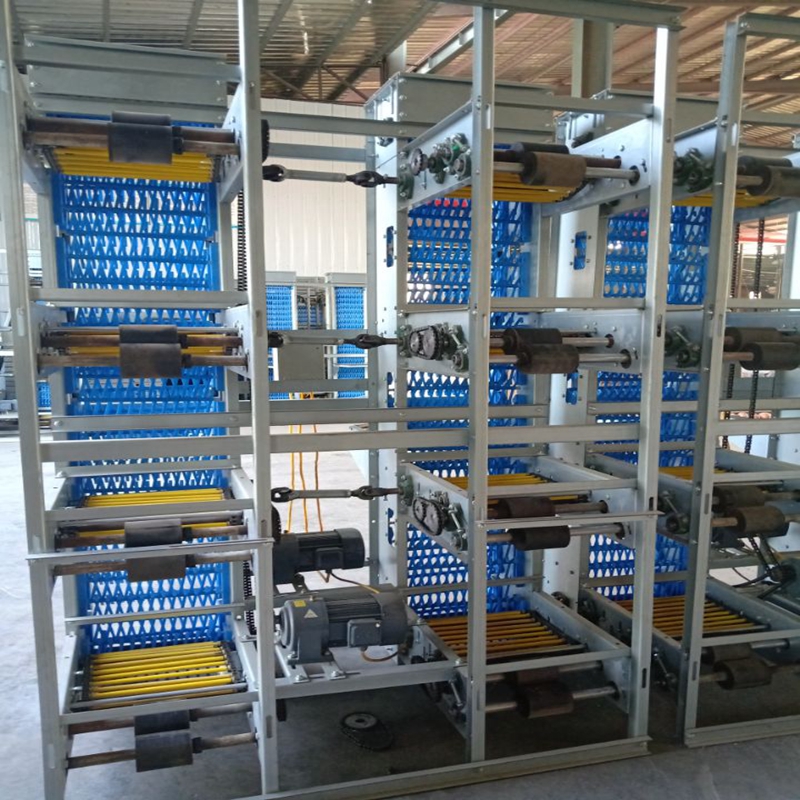Innovative Layer Poultry Cages for Enhanced Egg Production Efficiency and Chicken Welfare
Aug . 18, 2024 15:19 Back to list
Innovative Layer Poultry Cages for Enhanced Egg Production Efficiency and Chicken Welfare
Layer Poultry Cages Enhancing Egg Production Efficiency
Layer poultry cages are an essential component in the modern poultry industry, particularly for egg production. These specialized housing systems are designed to accommodate laying hens in a way that maximizes their productivity while ensuring their welfare. With the increasing demand for eggs globally, the implementation of layer cages has become pivotal in poultry farming practices.
One of the primary benefits of layer poultry cages is the significant increase in egg production efficiency
. Unlike traditional free-range or barn systems, which can lead to uneven laying patterns and higher mortality rates, layer cages provide a controlled environment that optimizes the laying process. Hens are housed in multi-tiered cages that allow farmers to closely monitor each bird’s health and productivity. This system minimizes stress among the hens, which directly correlates with higher egg yield. Research indicates that hens in well-managed cage systems can produce more eggs per bird compared to those in free-range environments.Another advantage of layer cages is improved biosecurity. Diseases can spread quickly among poultry, leading to devastating economic losses for farmers. Layer cages allow for better separation of individual birds, making it easier to manage health risks. Farmers can implement biosecurity measures more effectively, such as sanitizing equipment and controlling the movement of personnel. This reduced risk of disease transmission not only protects the hens but also ensures a consistent supply of eggs for consumers.
layer poultry cages

Moreover, layer poultry cages facilitate better resource management. In a cage system, the space required per hen is reduced, allowing farmers to house more birds in a confined area. This efficient use of space translates into lower costs for feed, bedding, and utilities, ultimately enhancing profitability. Additionally, layer cages often have integrated feeding and watering systems that ensure hens have constant access to food and fresh water, reducing waste and improving overall feed conversion rates.
Animal welfare is often a concern in discussions about layer cages. Critics argue that confinement can lead to stress and health issues in hens. However, modern cage systems, such as enriched cages, address these concerns by providing ample space for the hens to move, perch, and lay eggs. Some systems even include features such as nest boxes and dust baths, which allow hens to exhibit natural behaviors. The key is to strike a balance between efficiency and welfare, ensuring that hens stay healthy and productive.
Environmental sustainability is another important aspect of layer poultry production. The compact nature of layer cages reduces the carbon footprint associated with raising chickens. With a higher density of birds in a smaller area, there is a reduced need for land and resources compared to traditional farming methods. Additionally, improved waste management systems in layer farms can contribute to reducing odor and pollution, benefiting both the environment and nearby communities.
In conclusion, layer poultry cages represent a significant advancement in the poultry industry, offering numerous benefits that enhance egg production efficiency. From increased productivity and better biosecurity to improved resource management and environmental sustainability, these systems are crucial for meeting the growing global demand for eggs. While it is essential to continue advocating for animal welfare, the evolution of layer cage systems demonstrates that it is possible to achieve high levels of efficiency without compromising the health and well-being of the hens. As the industry evolves, ongoing innovations in layer cage design and management practices will further enhance the effectiveness and sustainability of egg production.
-
Hot Sale 24 & 18 Door Rabbit Cages - Premium Breeding Solutions
NewsJul.25,2025
-
Automatic Feeding Line System Pan Feeder Nipple Drinker - Anping County Yize Metal Products Co., Ltd.
NewsJul.21,2025
-
Automatic Feeding Line System Pan Feeder Nipple Drinker - Anping County Yize Metal Products Co., Ltd.
NewsJul.21,2025
-
Automatic Feeding Line System - Anping Yize | Precision & Nipple
NewsJul.21,2025
-
Automatic Feeding Line System - Anping Yize | Precision & Nipple
NewsJul.21,2025
-
Automatic Feeding Line System-Anping County Yize Metal Products Co., Ltd.|Efficient Feed Distribution&Customized Animal Farming Solutions
NewsJul.21,2025






